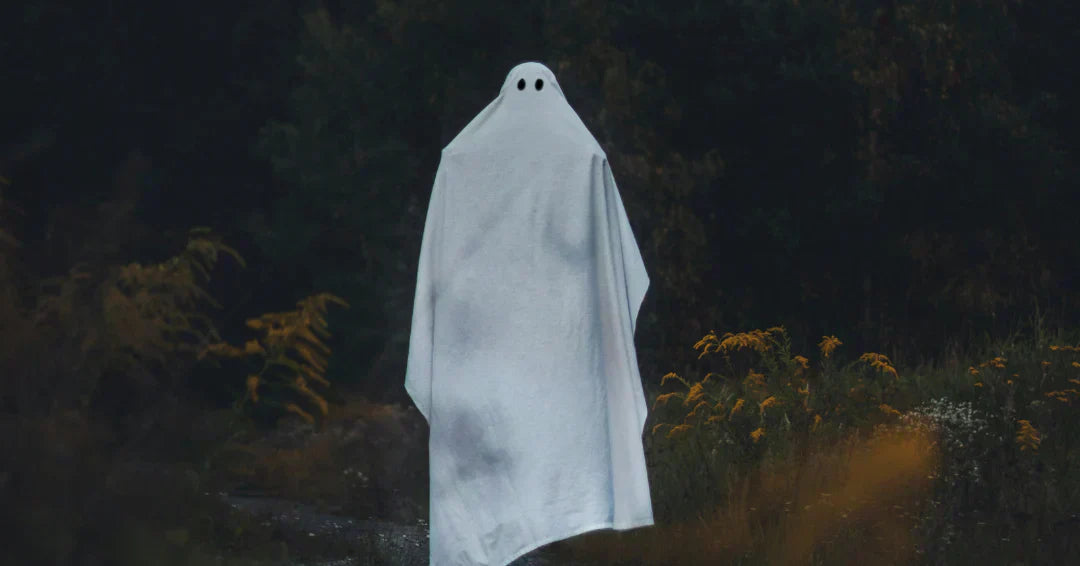Ghosts float around all year long mostly unnoticed, but when October arrives, these spooky apparitions are everywhere. A white sheet with a couple of holes cut out for eyes makes an easy Halloween costume. People hang ghosts from trees and around their homes to spook little trick-or-treaters. When the holiday is over, most kids forget about these haunting spirits until the next year. But for little ones who want to know a little bit more about ghosts, here are some spooky ghost facts to further pique their curiosity.

Everything Kids Want to Know About Ghosts
Children are naturally curious about the world, and ghosts, representing the ultimate unknown, offer a captivating realm of mystery and endless possibilities that truly spark their imaginations. When kids learn about different types of ghosts— whether friendly, frightening, vengeful, or historical—it opens them up to diverse narratives and cultural beliefs. This not only broadens their understanding of storytelling but also helps them grasp the vastness of the world beyond what they immediately experience. While the initial draw of ghosts might simply be the thrill, the deeper reasons for their appeal lie in how these supernatural tales significantly contribute to a child's emotional, cognitive, and social development. Ultimately, ghost facts provide a unique and engaging way for children to explore the complexities of life and the unknown.
Spooky Ghost Trivia for Halloween
Learning about ghosts is a frightful fun for kids during the Halloween season. Ghost facts and stories give children a controlled environment to experience a thrilling "scare." Think of it like a roller coaster for their minds: it's exciting and a little scary, but they always know they're safe. This rush of adrenaline can be incredibly enjoyable, even a bit addictive! Ghosts also let kids push the boundaries of what's known and possible, allowing them to safely explore concepts of mystery, and even the afterlife in an age-appropriate way, without any real-world danger. Beyond the thrill, ghost facts offer a rich tapestry for a child's imagination. Kids can visualize eerie settings, unique spectral appearances, and elaborate backstories for all sorts of ghosts. This naturally sparks creative play, drawing, and storytelling.

(1) There are different types of ghosts.
Poltergeists are ghosts that have the most interaction with the physical world and objects within it. These ghosts can make noise by moving objects around and are blamed for causing disturbances and mischief. Orbs are less intrusive floating balls of light that silently float through the air. Funnel ghosts are the spirits that mysteriously appear as blurry areas in photographs but are not visible when in their presence.
(2) Ghosts haunt people for several reasons.
One reason ghosts stick around is that they don't realize they are dead. These spirits believe they are still very much alive and attempt to interact with others. A second reason ghosts do not cross over to the other side is due to unfinished business or loose ends that need to be tied up before moving to the underworld. Another explanation for the presence of a ghost is its desire to say goodbye to loved ones. Spirits linger until they are fulfill an emotional need to make peace with friends and family they are leaving behind. And last but not least, ghosts stick around to provide guidance to people who are important to them. If someone who is important to them is dealing with a personal dilemma, ghosts will not leave until the situation is resolved.
(3) England is considered the most haunted country.
More than 60 documented houses, mansions, castles, and other structures are located in the United Kingdom. A likely explanation for this high concentration of ghosts is the long history of witchcraft, torture, and battles leaving behind tormented beings with unsettled business.

(4) Ghosts are present in both old and new buildings.
Most people associate the presence of ghosts with ancient, decrepit structures filled with cobwebs, broken windows, and creaking floorboards. Experts who track paranormal activity have detected ghosts in many other locations as well. Hospitals, asylums, prisons, and hotels are all popular ghost locales. Another common misconception is that ghosts only appear in places where there has been death.
(5) Ghosts are most likely to appear between the hours of 3 and 4 a.m.
During the early part of the 16th century, the Catholic church banned all activities from 3 to 4 in the morning. The belief was that all witchcraft occurred during that time, a practice that was against the church rules. The term "witching hour" was born from this policy and has become an integral part of paranormal folklore. This one haunting hour is when poltergeists emerge from hiding to taunt and terrorize everyone who had been peacefully asleep.
(6) Ghost hunting is classified as a pseudoscience.
Despite hundreds, if not thousands, of accounts from people who claim they've had encounters with dead spirits, there is no scientific proof that exists. Laws of physics and other methodologies do not support the presence of beings fluttering around to haunt the living. Ghost hunters make a living exploring old homes and buildings, using a variety of equipment that supposedly detects the spirits of the dead. However, more science-minded individuals attribute ghost sites and sounds to environmental factors and the way individuals perceive the world around them.
(7) Paranormal sightings are declining due to cell phones.
Some paranormal investigators suggest our widespread use of cell phones might be making ghosts harder to find! They believe the electromagnetic fields and electronic "noise" from our devices could be interfering with, or even "drowning out," the subtle energies spirits supposedly use to appear or interact with the living. So, it seems that while we're all busy scrolling, we might inadvertently be making the world a less welcoming place for ghosts!
(8) Pliny the Younger's haunted house is earliest documented ghost story.
During the 1st century AD in ancient Rome, a philosopher named Athenodorus rented a house that was haunted by the specter of an old man rattling chains. Being a philosopher, Athenodorus bravely followed the ghostly figure, which led him to an important discovery: buried bones. Once these remains were properly interred, the haunting immediately ceased.




